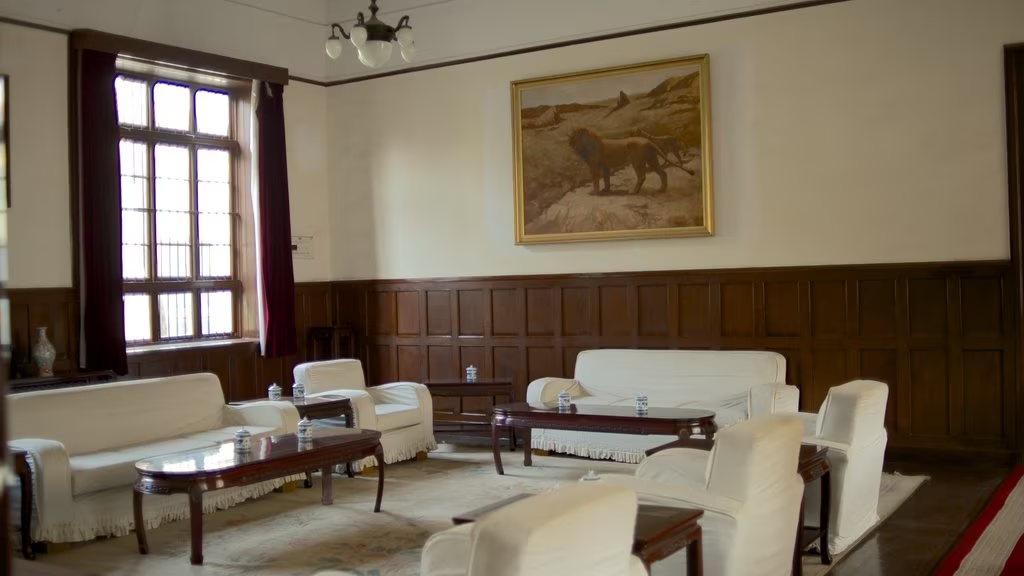The Presidential Palace of Nanjing, located at No. 292 Changjiang Road in the Xuanwu District, is one of the city’s most significant historical landmarks. Once the seat of power for the Republic of China from 1927 until 1949, it now serves as the China Modern History Museum, offering a fascinating glimpse into China’s tumultuous modern past. With over 600 years of history, stunning architecture, and beautifully preserved gardens, this site is a must-visit for history enthusiasts and travelers alike. Here’s a comprehensive travel guide to help you plan your visit.





Travel Guide to the Presidential Palace of Nanjing
Why Visit the Presidential Palace?
The Presidential Palace is a unique blend of imperial and modern Chinese history. Originally constructed during the Ming Dynasty (1368–1644) as a residence for royal princes, it evolved over centuries into a political hub. It was the site of Sun Yat-sen’s inauguration as the provisional president of the Republic of China in 1912 and later housed the Nationalist Government under Chiang Kai-shek. Today, its sprawling 90,000-square-meter complex combines traditional Chinese gardens, Western-style buildings, and historical exhibits, making it a captivating destination for those interested in China’s political and cultural heritage.
How to Get There
The Presidential Palace is conveniently located in central Nanjing, making it easily accessible by public transportation:
Subway: Take Metro Line 2 or Line 3 to Daxinggong Station. Exit at Exit 1, then walk approximately 370 meters (about 5 minutes) east along Changjiang Road to reach the entrance.
Bus: Several bus routes stop near the palace, including lines 9, 29, 44, 65, 95, 304, or G5. Get off at the Zongtongfu (Presidential Palace) stop. Alternatively, buses 2, 3, 31, 68, 80, or 313 stop at Daxinggong Bei, a short walk away.
Taxi or Rideshare: From central Nanjing (e.g., Xinjiekou), a taxi ride takes about 10–15 minutes and costs around 15–20 RMB, depending on traffic.
Opening Hours and Tickets
Opening Hours:
March 1 to October 14: Tuesday–Sunday, 8:30 AM–6:00 PM
October 15 to February 28: Tuesday–Sunday, 8:30 AM–5:00 PM
Closed on Mondays (except public holidays and Chinese New Year).
Entrance Fee: 40 RMB per person.
Tips: Purchase tickets at the gate with a valid ID (passport for foreigners). English-guided tours are available for an additional fee (approximately 150 RMB for groups of 10 or fewer), which can enhance your experience if you’re keen on detailed historical context.
What to See and Do
The Presidential Palace is divided into three main sections: the Central Area, the West Area, and the East Area. Here’s what to explore in each:
Central Area
Gate Tower: The iconic Western-style entrance, rebuilt in 1929, is a popular spot for photos. The three Chinese characters for “Presidential Palace” above the gate were inscribed by a notable Republican-era official.
Great Hall: A traditional Chinese building where Sun Yat-sen’s inauguration took place. Look for the plaque reading “The World is for the Public,” a nod to his ideals.
Zichao Tower: This five-story building served as the main office for the Nationalist Government and offers exhibits on the Republic of China’s history.
West Area
Xuyuan Garden (West Garden): A serene Jiangnan-style garden featuring pavilions, a stone boat (Unmoored Stone-boat), and Taiping Lake. It’s a peaceful retreat within the complex.
Office of the Provisional President: Visit the room where Sun Yat-sen worked and held his first cabinet meeting in 1912. The Renaissance-style building is a highlight for history buffs.
East Area
East Garden: A quieter section with historical buildings like the former Executive Yuan and stables, reflecting various architectural styles.
Exhibits: Explore displays of historical documents and artifacts that chronicle China’s modern history, from the Taiping Rebellion to the founding of the People’s Republic.
Time Required: Plan to spend 2–3 hours to fully explore the palace and museum exhibits. Add extra time if you opt for a guided tour.
Travel Tips
Best Time to Visit: Spring (March–May) and autumn (September–November) offer pleasant weather, ideal for strolling the gardens. Summers can be hot and humid, while winters are chilly.
What to Bring: Comfortable walking shoes, a hat or umbrella (for sun or rain), and a camera. The site is large, so be prepared for some walking.
Language: Most signage is in Chinese, though some exhibits have English translations. Hiring a guide or using a translation app can help.
Crowds: The palace is popular with domestic tourists, especially on weekends and holidays. Visit early in the morning for a quieter experience.
Nearby Attractions: Pair your visit with stops at the Confucius Temple (Fuzimiao), Zhanyuan Garden, or Dr. Sun Yat-sen’s Mausoleum, all within a short distance.
Dining and Shopping
On-Site: There’s a small café near the entrance offering drinks and light snacks. A post office inside lets you send postcards using your ticket as a souvenir.
Nearby: The 1912 District, just west of the palace, is a lively area with restaurants, bars, and international chains like Starbucks. Try local Nanjing specialties like salted duck or duck blood soup at nearby eateries.
Final Thoughts
The Presidential Palace of Nanjing is more than just a historical site—it’s a journey through China’s complex past, from imperial grandeur to revolutionary fervor. Whether you’re drawn by its architecture, gardens, or the stories of figures like Sun Yat-sen and Chiang Kai-shek, this destination offers a rich and rewarding experience. Plan your visit today and step into the heart of modern Chinese history!













